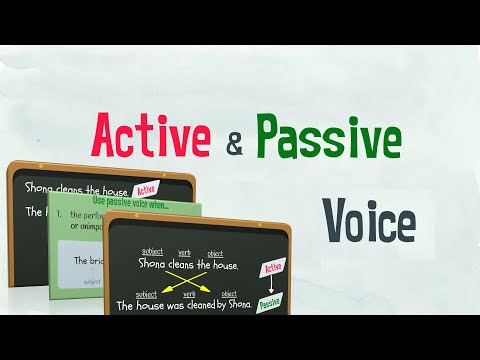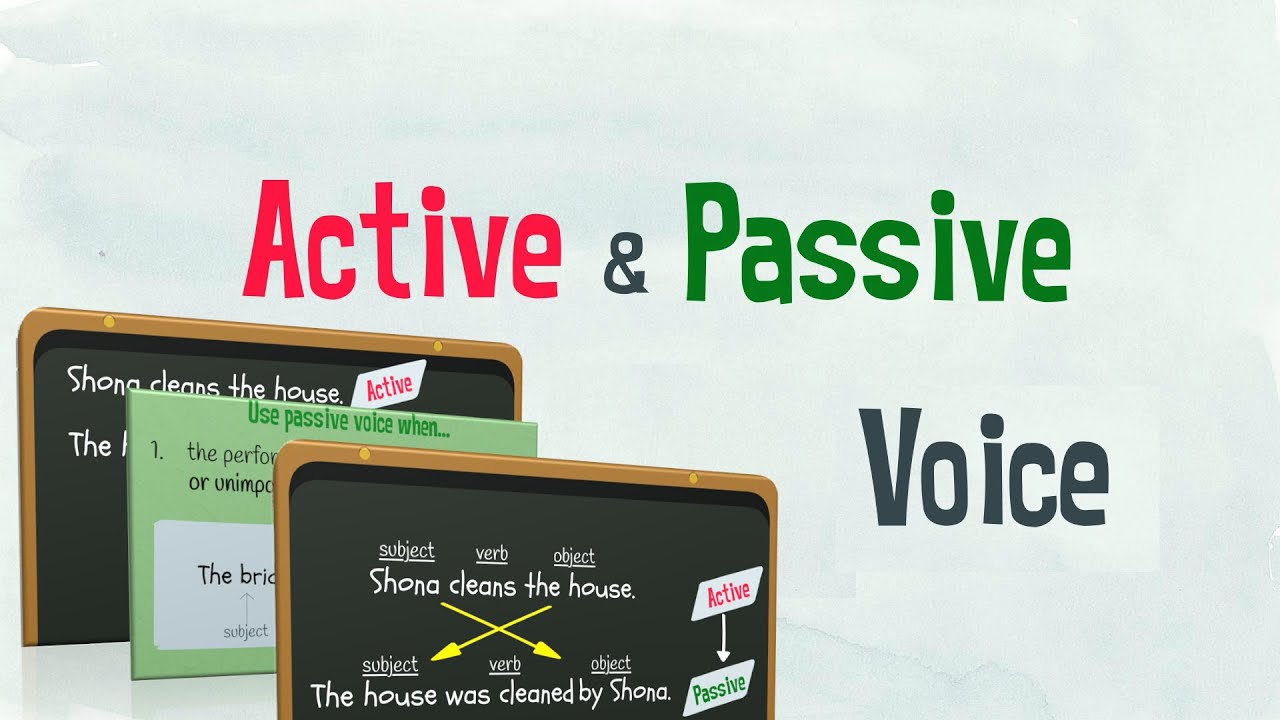Discover the Power of Active Voice: Have you ever wondered how to make your writing more engaging and impactful? Look no further than the active voice! This dynamic writing style breathes life into your sentences, injecting energy and clarity into your message. Unlike its passive counterpart, the active voice emphasizes the subject performing the action, making your writing more direct and compelling. Gone are the days of dull and lifeless prose – with the active voice, your words will leap off the page and captivate your readers. By using action verbs and placing the subject at the forefront, you infuse your writing with a sense of urgency and purpose. Whether you’re crafting a persuasive essay, a captivating story, or a riveting blog post, the active voice is your secret weapon for engaging your audience. Not only does it make your writing more lively and interesting, but it also promotes clarity and avoids ambiguity. So, are you ready to take your writing to the next level? Harness the power of the active voice and watch as your words come alive, leaving a lasting impact on your readers. Upgrade your writing skills today and embrace the art of active voice!

An Introduction to Active Voice
| Characteristic | Description |
|---|---|
| Definition | Active voice is a grammatical construction where the subject of a sentence performs the action expressed by the verb. It emphasizes the doer of the action rather than the receiver. |
| Clear and Direct | Active voice helps to create concise and straightforward sentences. By placing the subject at the beginning, it ensures a clear and direct communication of the message, making the sentence more engaging for the reader. |
| Engages the Reader | Using active voice draws the reader’s attention to the subject and highlights their agency. This captivates the reader and brings them closer to the action, making the writing more dynamic and compelling. |
| Enhances Clarity | Active voice aids in better comprehension of the message. It reduces ambiguity by clearly indicating who or what is performing the action, thus facilitating a more precise understanding of the sentence’s meaning. |
| Emphasizes Responsibility | Active voice holds the subject accountable for their actions. By using this construction, the writer highlights and reinforces the subject’s responsibility, making the writing more persuasive and authoritative. |
| Increases Sentence Impact | Active voice adds power and impact to your sentences. It creates a sense of immediacy and urgency, making the writing more engaging and memorable for the reader. |
English Learning Made Easy: Mastering Active and Passive Voice
The Active Voice: A Clear and Powerful Writing Style
Effective communication is crucial in today’s fast-paced world. Whether it’s a business email, a persuasive essay, or a captivating novel, the way we convey our thoughts and ideas can greatly impact how they are received and understood. One important aspect of writing that plays a significant role in clarity and impact is the use of active voice. In this article, we will explore what active voice is, why it is important, and how to utilize it effectively in your writing.
What is Active Voice?
Active voice is a grammatical structure in which the subject of a sentence performs the action expressed by the verb. It is the opposite of passive voice, where the subject receives the action. In active voice, the subject is the doer of the action, while in passive voice, the subject is the receiver of the action.
For example, let’s consider the following sentences:
Active Voice: John threw the ball.
Passive Voice: The ball was thrown by John.
In the active voice sentence, John is the subject and the one performing the action of throwing the ball. However, in the passive voice sentence, the ball becomes the subject, and John is relegated to the end of the sentence as the receiver of the action. Active voice tends to be more direct, concise, and engaging, making it a preferred choice for many writers.
Why is Active Voice Important?
Active voice is important for several reasons:
1. Clarity and Directness
Active voice sentences are straightforward and easier to understand. They place the emphasis on the subject and their actions, allowing the reader to quickly grasp who is doing what. This clarity is especially valuable in professional, academic, and technical writing, where precision and efficiency are paramount.
2. Engaging and Dynamic Writing
Active voice injects energy and life into your writing. By placing the subject at the forefront, it creates a sense of immediacy and involvement. Readers are more likely to be engaged and connected to the story when the main characters are actively driving the narrative.
3. Enhanced Readability
Active voice sentences are generally shorter and easier to read. They flow more smoothly and require less mental effort to process. This readability factor is particularly important in today’s fast-paced digital age, where attention spans are shorter, and information overload is common.
4. More Convincing Arguments
When presenting arguments or persuading others, active voice can be highly effective. By using active verbs, you give the impression of confidence, authority, and conviction. This can help make your ideas more persuasive and compelling.
5. Identifying Responsibility
Active voice helps clarify responsibility and accountability. By explicitly stating who is performing the action, it becomes clear who is responsible for the consequences or results. This can be particularly useful in legal or professional contexts where assigning blame or credit is essential.
Tips for Using Active Voice Effectively
Now that we understand the importance of active voice, here are some tips to help you use it effectively in your writing:
1. Identify the Subject and Verb
To write in active voice, you need to clearly identify the subject and the verb in your sentence. The subject should be the one performing the action, and the verb should reflect that action.
2. Use Strong and Active Verbs
Avoid weak or passive verbs that dilute the impact of your writing. Instead, opt for strong and active verbs that convey action, such as “achieve,” “create,” or “solve.” These verbs not only make your writing more engaging but also help you paint a vivid picture in the reader’s mind.
3. Rearrange the Sentence Structure
In some cases, you may need to rearrange the sentence structure to ensure the subject comes before the verb. This helps maintain the active voice and keeps the focus on the doer of the action.
4. Be Mindful of Passive Constructions
Passive voice can creep into your writing unknowingly. Be mindful of phrases like “it is,” “there are,” or “something was done.” Whenever possible, rephrase the sentence to eliminate passive constructions and make it more active and engaging.
5. Vary Sentence Length and Structure
While active voice is preferred in most cases, it’s important to vary your sentence length and structure to maintain reader interest. Mix shorter, punchier active voice sentences with longer, more descriptive ones to create a pleasing rhythm and flow.
In conclusion, active voice is a powerful tool that can greatly enhance the clarity, impact, and persuasiveness of your writing. By placing the subject at the forefront and emphasizing their actions, you create a dynamic and engaging narrative that captivates your readers. So, remember to keep your writing active and let your words come alive!

